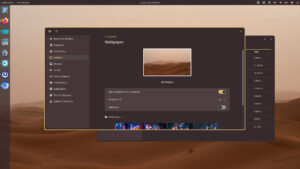There’s a good chance that when Fedora 40 is released in April, that it will become the first major Linux distro to be released without X.

With developers on the bandwagon to completely remove X support from Fedora, it’s a certainty that Wayland will totally rule the roost at Red Hat’s community Linux distribution sooner rather than later. The only question right now is exactly when, with the smart money folks saying to look for that to happen with the release of Fedora 40 in April.
Although nothing’s written in stone yet, it’s almost a certainty that Fedora 40’s KDE Plasma spin will will be X11-free, and it’s nearly as certain that Fedora’s flagship Gnome edition will also do away with X support by then.
Fedora devs have been working for a while to remove X entirely from the Fedora line, and Fedora’s Gnome and KDE teams have both set the April release of version 40 as something of a target date to get the deed done. Yesterday, it became almost as official as it can get that X will be gone completely from Fedora KDE Plasma 40, when the Fedora Engineering Steering Committee approved a proposal to release it without X support.
A similar proposal from the Gnome team is still awaiting approval from FESCo, which probably acted on the KDE proposal first because it was under pressure to do so. The KDE spin also needed approval to swap the Plasma 5 desktop for Plasma 6, which will not support X.
If that happens, it will make Fedora the first major Linux distro to completely drop X, and looking back it seems kind of strange this would be the case. Back in 2008 when Wayland development was just getting started, 24-year-old X11 was already long in the tooth and pretty much obsolete. At the time, it seemed that within five years or so that Wayland would be up to speed and that X would be part of Linux’s history.
We still have far to go before mainstream Linux is free from X11. Just a week ago we learned that Linux Mint developer Clément Lefebvre is just now experimenting with a Wayland version of Cinnamon, which is one of the few remaining X11-only Linux desktops.
Fedora KDE Plasma
For those who wonder if Fedora KDE Plasma really has to remove X support just because its upstream desktop has, the Fedora folks answer with a “if not now, when?” response:
“There is no such thing as a ‘good’ time to do this. It is true that KDE Plasma 6 is retaining support for the X11 session upstream, this is being done with the acknowledgement that it will be abandoned and unmaintained (and potentially even removed) midway through the lifetime of Plasma 6. Everyone upstream understands the Xorg server and its associated DDX software is effectively dead. The X11 session is being dropped in Fedora KDE because it is already two steps removed from being unmaintained.
“The KDE SIG does not want to be put into a position where they have to do something about Plasma X11 and Xorg under these circumstances. Given that Fedora KDE has used Plasma Wayland by default since Fedora Linux 34 and Plasma Wayland gets a serious upgrade in Plasma 6 from the already decent state of the Wayland session in Plasma 5, the KDE SIG is very confident in being able to switch fully over now. This also allows us to avoid a more painful switch later, as we feel users will be more accepting of the change on the major version upgrade rather than some point later on a minor version.
“This does not apply to Xwayland, as that is actively developed and maintained. This allows us to retain compatibility for X11 applications with Plasma Wayland.”
Xwayland is an X server and a Wayland client that acts as a proxy between legacy X clients that don’t support Wayland protocols and the Wayland server.
Fedora Workstation
Over on the Fedora Workstation side where Gnome rules the day, devs would like to get rid of X11 because it isn’t necessary and because it means more work:
“Wayland has been our default session for a long time and has matured considerably. At the same time, the X11 session isn’t getting as much testing, and is an additional resource burden.”
Currently, the Workstation crew is suggesting three options for dealing with X11:
- Hide the X11 session by default, so that fewer people use it.
- Remove the X11 session file. Users would be able to add it back and use it as an unsupported configuration.
- Build GNOME components (e.g. mutter/gnome-shell/gnome-session) without X11 support. Technically, users could recompile those packages themselves.
My guess is they’ll choose the middle option and just remove it, and let users add it back and run it unsupported if they need it. The Workstation team points out that removing X completely should have little to no effect on most users:
“These changes would only affect GNOME and the session. Apps would still be able to use X11 through Xwayland.”
Christine Hall has been a journalist since 1971. In 2001, she began writing a weekly consumer computer column and started covering Linux and FOSS in 2002 after making the switch to GNU/Linux. Follow her on Twitter: @BrideOfLinux








I’m persuaded by the arguments that waiting for Wayland to have the last remaining issues solved before removing X are the reason Wayland’s last remaining issues aren’t getting solved. Once X is no longer an option, it will force the issue.
I applaud the Fedora team for tackling this. I admit, I expect the transition to be a bit rocky. I hope I’m wrong.
Google .MSFT and other software companies actively discourage ,discredit and put obstacles against free software as it will reduce their revenues, hence the slow development of free software .
Fedora Wayland diyorsa bildiği vardır. cCc St.Torvalds RedHat cCc
No surprises here. Fedora has always been like this, and at least this time they came with a long warning. I don’t mind – I’m already on Wayland session, and it worked fine for me. The one thing I’m hoping for to be fixed is unattended remote desktop – primarily for TeamViewer or RustDesk. Hopefully that’ll come soon.